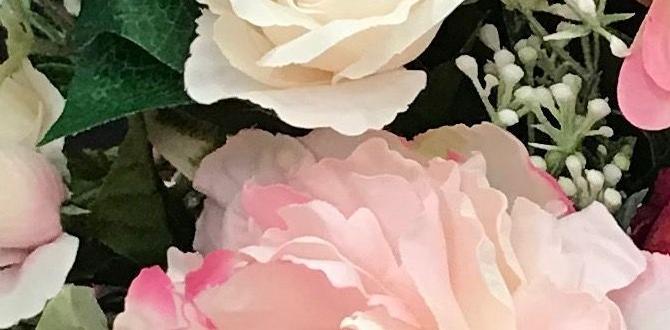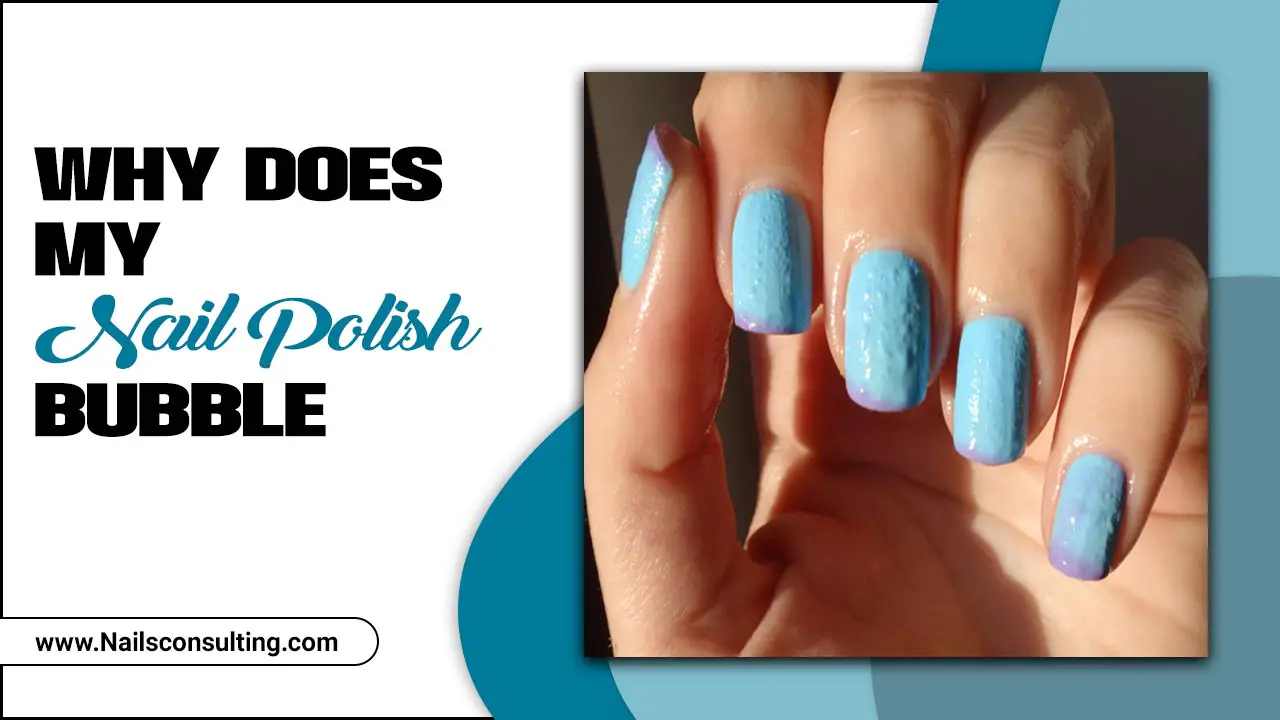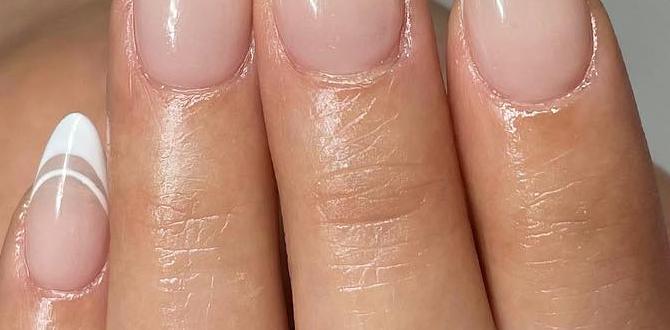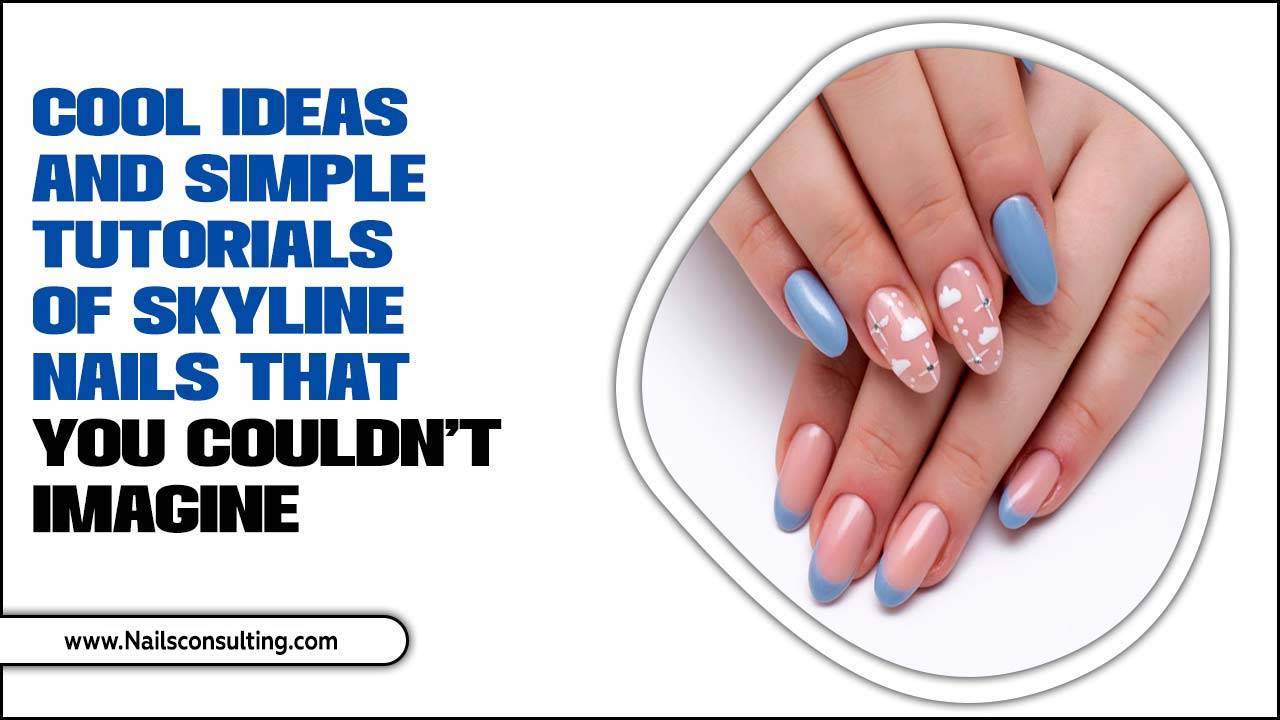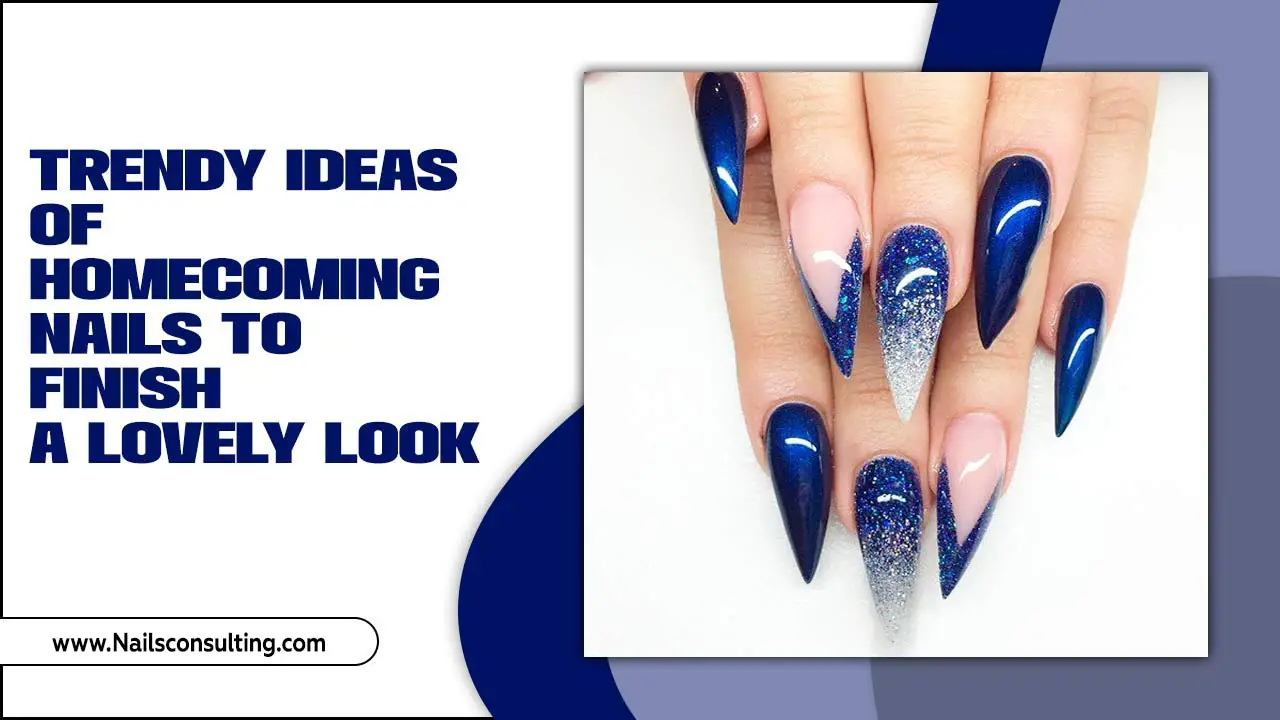Tortoiseshell nail designs offer a chic, unique way to elevate your manicure with their warm, marbled patterns inspired by nature. They’re surprisingly easy to recreate at home, even for beginners, proving you don’t need to be a pro to achieve a sophisticated, eye-catching look.
Ever look at your nails and think, “I need something different, something with a bit of edge but still undeniably stylish”? You’re not alone! The tortoiseshell pattern has a timeless appeal, bringing a touch of sophisticated flair to fashion and accessories. Now, you can bring that same gorgeous texture and depth to your fingertips. Many people find nail art intimidating, thinking it requires a steady hand and years of practice. But the beauty of tortoiseshell nails is their organic, imperfect charm. The whole point is a layered, slightly messy-yet-masterful look that’s incredibly forgiving. Get ready to learn how to create these stunning designs, perfect for anyone wanting to add a unique touch to their style.
Why Tortoiseshell Nails Are a Must-Try Trend
Tortoiseshell nails are more than just a trend; they’re a statement. They capture the natural beauty of a tortoise’s shell, creating a rich, multi-dimensional look that’s both sophisticated and a little bit wild.
Here’s why they’re so popular and why you should give them a try:
Unique Aesthetic: Unlike solid colors, tortoiseshell patterns offer visual interest with their warm hues and irregular marbling. They’re eye-catching without being overly flashy.
Versatile: The color palette typically involves warm browns, blacks, and yellows or golds, which pair beautifully with many outfits and skin tones. You can also adapt the colors to fit different seasons or moods.
Beginner-Friendly: The beauty of this design lies in its natural imperfection. You don’t need a laser-precise steady hand; the organic blending is part of its charm.
Chic and Timeless: While trends come and go, the tortoiseshell pattern has a classic feel that never truly goes out of style. It adds an instant touch of luxury.
Adaptable: From full patterned nails to subtle accents, tortoiseshell can be incorporated in many ways to suit your personal style.
Essential Tortoiseshell Nail Styles: A Beginner’s Guide
Ready to dive into the world of tortoiseshell nails? Let’s explore the most popular styles, from the classic to the modern twists. We’ll break down how to achieve that signature look, making it super easy for you to recreate at home.
1. The Classic Tortoiseshell
This is the quintessential tortoiseshell nail. It mimics the rich, warm browns and blacks of a real tortoise shell, often accented with hints of amber or gold. It’s earthy, sophisticated, and always in style.
What You’ll Need:
Base coat
One or two shades of neutral polish (e.g., nude, pale beige, or sheer white) for the base color
Brown nail polish (a medium to dark shade)
Black nail polish
Yellow or amber nail polish (optional, for depth)
Top coat
A fine-tipped nail art brush or a toothpick
Nail polish remover and cotton swabs for cleanup
How to Achieve the Classic Look:
1. Prep Your Nails: Start with clean, dry nails. Apply a base coat to protect your natural nails and help the polish adhere better.
2. Apply the Base Color: Paint your nails with your chosen neutral color. This provides a lighter background for the tortoiseshell pattern to pop. Let it dry completely.
3. Create the “Veins”: Dip your fine-tipped brush into the brown polish. Draw thin, irregular lines or “veins” across your nail. Don’t make them too uniform; think organic and flowing.
4. Add Depth with Black: Now, use your brush with black polish. Add more thin, irregular lines, intertwining them with the brown lines. You can also use the black to slightly deepen some areas where the brown lines are. Again, keep it natural.
5. Introduce Warmth (Optional): If you want that authentic amber glow, use your yellow or amber polish. Add a few small patches or thin lines sparingly, especially where the brown and black meet. This adds visual richness.
6. Meld the Colors: While the polishes are still slightly wet (work quickly but carefully!), use a clean, dry brush or a toothpick to gently swirl or blend the edges of the colors together. The goal isn’t to mix them into a muddy mess, but to create a soft, marbled effect. A few light strokes are all you need.
7. Clean Up: Use a cotton swab dipped in nail polish remover to clean up any polish that got on your skin.
8. Seal the Deal: Once completely dry, apply a thick, glossy top coat. This will seal in the design and give your nails a beautiful, high-shine finish.
2. The Modern Tortoiseshell (Color Pop)
Who says tortoiseshell has to be brown and black? This style takes the classic pattern and injects it with a modern, playful twist using unexpected colors. Think shades of pink, blue, green, or even pastels!
What You’ll Need:
Base coat
A light, neutral base color (white, cream, or a very pale pastel works best)
Two or three colors of your choice for the “tortoiseshell” effect (e.g., a darker pink, a lighter pink, and white; or a teal, a navy, and white)
Top coat
Fine-tipped nail art brush or toothpick
Nail polish remover and cotton swabs
How to Achieve the Color Pop Look:
1. Base Coat & Base Color: Apply your base coat, followed by a solid coat of your light neutral or pastel color. Ensure it’s fully dry.
2. First “Vein” Color: Using your fine brush, paint thin, irregular lines of your darkest chosen color (e.g., navy, deep red, forest green).
3. Second “Vein” Color: With your second color (a bit lighter, or a contrasting shade like bright pink or turquoise), add more lines, overlapping slightly with the first color and leaving some of the base color showing.
4. Highlight/Blend (Optional): You can use white or a lighter shade of one of your colors to create small highlights or blend the edges very subtly.
5. Gentle Marbling: Just like the classic style, use a clean brush or toothpick to gently swirl the wet colors together. The goal is a marbled effect, not a complete mix.
6. Cleanup and Top Coat: Clean up any stray polish with remover and protect your masterpiece with a glossy top coat.
3. Tortoiseshell Accents
Not ready to commit to a full set of tortoiseshell nails? No problem! This style uses the tortoiseshell pattern as an accent, pairing it with solid colors for a more subtle and sophisticated effect.
What’s Great About This Style:
Super Wearable: Perfect for the office or if you prefer a more understated look.
Easy to Introduce: A fantastic way to try the trend without going all-in.
Highlights the Pattern: Makes the tortoiseshell detail the star of the show against a complementary backdrop.
How to Do It Best:
Pairing Colors:
Classic Tortoiseshell Accents: Pair with solid nails in black, deep brown, creamy beige, or even a deep emerald green.
Color Pop Tortoiseshell Accents: Pair with solid nails in a single color from your tortoiseshell palette, or a complementary neutral like white or nude.
Placement:
One Accent Nail: Apply the tortoiseshell pattern to an accent nail (like your ring finger) while the rest of your nails are a solid color.
French Tip Tortoiseshell: Instead of a white tip, create a tortoiseshell “tip” on a French manicure.
Half-Moon Tortoiseshell: Apply the pattern to the half-moon at the base of the nail.
The Technique for Accents: Follow the same steps as the classic or color pop tortoiseshell, but apply only to the nail(s) you want as accents. Ensure the solid color nails are perfectly dry before you start the accent design.
4. Tortoiseshell French Tips
This is a chic twist on the classic Frenchnail. Instead of the usual white tips, you create a tortoiseshell pattern in the tip area. It’s elegant, unexpected, and utterly fashionable.
What You’ll Need:
Base coat
Nude or sheer pink polish for the nail bed
Brown and black nail polish
Yellow or amber polish (optional)
Top coat
Very fine nail art brush
Nail polish remover and cotton swabs
Optional: Nail stencils or tape for a cleaner line (though organic edges are fine too!)
How to Create Tortoiseshell French Tips:
1. Prep & Base: Apply base coat and then your chosen nude or sheer pink polish to the entire nail. Let it dry.
2. Define the Tip Area: You can either freehand your tip line or use a stencil/tape to create a guide.
3. Apply Tortoiseshell to the Tip: Using your fine brush, carefully paint the tortoiseshell pattern onto the tip of the nail. Start with brown, then add black lines, blending very gently. You can also add touches of amber. Think of creating mini swirls or irregular patches within the tip area.
4. Blend & Refine: A toothpick or a very fine brush can help refine the edges of your tortoiseshell tip, ensuring it looks marbled and cohesive.
5. Cleanup: Carefully clean up any stray polish from your nail bed or cuticle area.
6. Top Coat: Apply a generous top coat to seal and add shine, making sure to cap the free edge of your nail.
5. Tortoiseshell Chrome/Metallic Accents
For an extra touch of glam, consider incorporating metallic finishes into your tortoiseshell design. This can involve using a chrome powder over your tortoiseshell pattern or using metallic polishes within the design itself.
How to Get the Shine:
Chrome Powder: After applying your tortoiseshell pattern and a “tacky” (not fully dry) top coat or a specific chrome-effect top coat, rub chrome powder over it. Then seal with a regular top coat.
Metallic Polishes: Use gold, rose gold, or bronze polishes to draw some of the “veins” or add small metallic flecks within your tortoiseshell design.
This style is incredibly eye-catching and perfect for special occasions or when you want your nails to truly stand out.
Tools of the Trade: What You Need for Tortoiseshell Nails
Don’t worry, you don’t need a nail salon’s worth of tools! A few basic items will get you started with stunning tortoiseshell nails.
Here’s a breakdown of the essential tools and why they’re helpful:
Base Coat: Crucial for protecting your nails and ensuring a smooth application.
Assorted Nail Polishes:
Neutral Base: Nude, beige, cream, or white.
Tortoiseshell Colors: Medium brown, dark brown, black are standard. For color variations, choose your desired shades.
Accent/Highlight Color: Yellow, amber, gold, or white for added dimension.
Fine-Tipped Nail Art Brush: This is your primary tool for drawing the delicate lines of the tortoiseshell pattern. Look for brushes specifically designed for nail art. 💅
Toothpick: A great alternative or supplement to a brush for drawing fine lines and gently swirling colors.
Top Coat: Essential for sealing the design, adding shine, and improving longevity. A quick-dry formula can be a lifesaver!
Nail Polish Remover & Cotton Swabs/Pencil: For cleaning up any mistakes around the cuticles or nail edges. Special cleanup pencils are precise and highly effective.
Optional: Dotting Tool: Can be used to add small dots of color or to help blend edges.
Optional: Stencils or Tape: If you’re aiming for very precise lines, especially for French tips, these can help.
Getting Started with Your Nail Art Brush
If you’re new to nail art brushes, here’s a quick tip: don’t overload them with polish. Dip the tip of the brush in polish and wipe off the excess on the edge of the bottle. This gives you more control and prevents blobs. For tortoiseshell, you want thin, delicate lines, so a little polish goes a long way.
Step-by-Step Guide: Mastering the Tortoiseshell Technique
Let’s get hands-on! This guide breaks down the general technique for creating a beautiful tortoiseshell pattern. Remember, practice makes perfect, and the beauty of this design is its natural look.
Step 1: Nail Preparation
Start with clean, dry nails. Push back your cuticles gently and file your nails to your desired shape. Apply a good quality base coat. This is your foundation for a long-lasting manicure.
Step 2: Apply the Base Color
Paint your nails with your chosen base color. This could be a sheer nude, a creamy beige, or even pure white for a bolder contrast. Let this coat dry completely. It’s important that this layer is solid and opaque before you start adding the detailed pattern.
Step 3: Lay Down the First Color (Brown)
Using a fine-tipped nail art brush, dip into your brown nail polish. Wipe off excess polish on the edge of the bottle. Now, draw thin, irregular lines or “patches” across your nail. Don’t aim for symmetry; tortoiseshell is all about organic shapes. Think of it like freehanding strokes that mimic natural veins.
Step 4: Introduce the Darker Tone (Black)
Clean your brush. Dip it into the black nail polish. Apply more thin, irregular lines, weaving them between the brown lines. You can also use black to add depth to some of the brown areas by layering it subtly. The key is to create dimension, not a solid block of color.
Step 5: Add Warmth and Dimension (Optional – Yellow/Amber/Gold)
If you’re using a yellow or amber polish, dip your cleaned brush into it. Add a few small patches or thin lines, particularly where brown and black meet. This step really brings out the authentic tortoiseshell glow and adds that extra layer of visual interest.
Step 6: The Blending Magic
Work quickly while the polishes are still wet! Take a clean, dry brush or a toothpick. Very gently, swirl or drag the edges of the colors together. The idea is to meld them slightly, creating a soft, marbled effect, not to mix them into a uniform shade. A few light strokes are all you need. Over-blending will make the colors look muddy.🦄 Think about the natural flow you see in a real shell.
Step 7: Clean Up Edges
Dip a cotton swab or a cleanup brush into nail polish remover. Carefully clean up any polish that has smudged onto your skin around the nail. This step makes a huge difference in the professional finish of your manicure. For precision, a specialized cleanup pencil can be incredibly handy.
Step 8: Seal with Top Coat
Once you are absolutely sure the polish is dry (this is crucial!), apply a generous layer of top coat. This seals the design, provides a beautiful glossy finish, and helps your tortoiseshell nails last longer. Make sure to cap the free edge of your nails by running the brush along the tip.
—
Tips for Success
Work in Thin Layers: It’s better to add more thin layers of color than one thick one, especially for the marbling stage.
Clean Your Brush Frequently: Wipe your brush with a lint-free wipe and remover between colors to avoid muddying your palette.
Don’t Be Afraid of Imperfection: The organic nature of tortoiseshell is its appeal. Embrace the unique swirls and lines you create!
Practice on a Flat Surface: If you’re worried about getting the hang of it, practice the marbling technique on a plastic bag or a piece of paper first.
Patience with Drying Time: Rushing the drying between layers can lead to smudges and mixed-up colors.
Variations and Adaptations of Tortoiseshell Designs
The beauty of tortoiseshell nails lies in their adaptability. Once you’ve mastered the basic technique, you can play with various styles to suit your personality and the occasion.
Here are a few popular variations to inspire you:
Ombre Tortoiseshell: Blend the tortoiseshell colors into an ombre effect, either horizontally or vertically.
Tortoiseshell French Ombre: Combine the tortoiseshell pattern with a French ombre, where the tortoiseshell effect fades into a sheer base.
Minimalist Tortoiseshell: Use the pattern only on the tips or as small accent details on a minimalist base.
Matte Tortoiseshell: After applying your glossy tortoiseshell design, finish with a matte top coat for a sophisticated, velvety texture.
Glitter Tortoiseshell: Add a layer of fine gold or bronze glitter over the tortoiseshell design for extra sparkle.
* “Jelly” Tortoiseshell: Use semi-sheer polishes for a translucent, lighter effect.
Choosing Your Color Palette
While classic brown and black are beautiful, don’t shy away from experimenting! Consider these palettes:
| Color Palette Theme | Colors to Use | Occasion/Vibe |
| :—————— | :—————————————————————————— | :——————— |
| Classic Warm | Medium Brown, Dark Brown, Black, Creamy Beige, Gold/Amber | Everyday, Elegant |
| Cool Tones | Navy Blue, Charcoal Grey, White, Pale Blue/Lavender, Silver | Chic, Modern |

